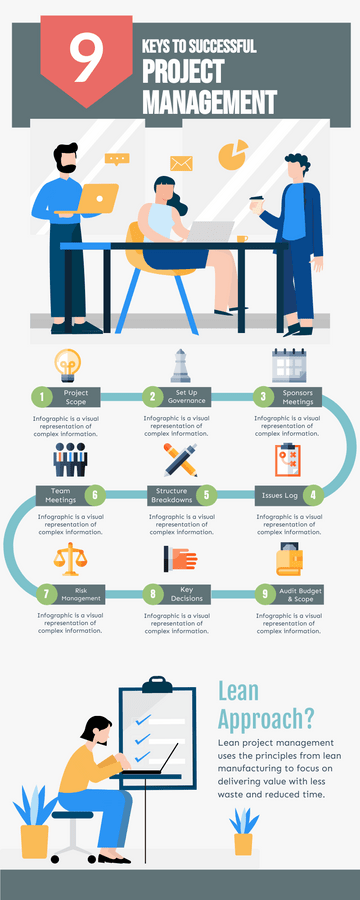Top 9 Keys to Successful Project Management Infographic
A project is a temporary work that creates a unique product, service, or result. The “temporary” nature of the project means that the project has a clear beginning and end point. The project ends when the project goals are achieved, or when the project terminates because it is unachievable or unachievable, or when the project no longer needs to exist.
Temporary doesn’t necessarily mean short-term. The products, services, or results produced by a project are usually not temporary. Most projects aim to create lasting results.
What Is Project Management?
Project management is the application of knowledge, skills, tools, and techniques to project activities to meet project requirements. Project management is achieved through rational use and integration of 42 project management processes. According to their logical relationship, these 42 processes can be classified into 5 process groups, namely: start, plan, execute, monitor, and close.
Examples of Projects Include (But Are Not Limited To):
- Develop a new product or service;
- Change the structure, staffing or style of an organization;
- Develop or purchase a new or improved information system;
- Construct a building or an infrastructure;
- Implement a new set of business processes or procedures.

Managing a Project
Managing a project usually involves:
- identifying needs;
- dealing with the needs,
- concerns and expectations of stakeholders when planning and executing the project;
- balancing competing project constraints, including (but not limited to): scope, quality, schedule, budget , Resources, risks.
- Specific projects will have specific constraints, and project managers need to pay attention.

